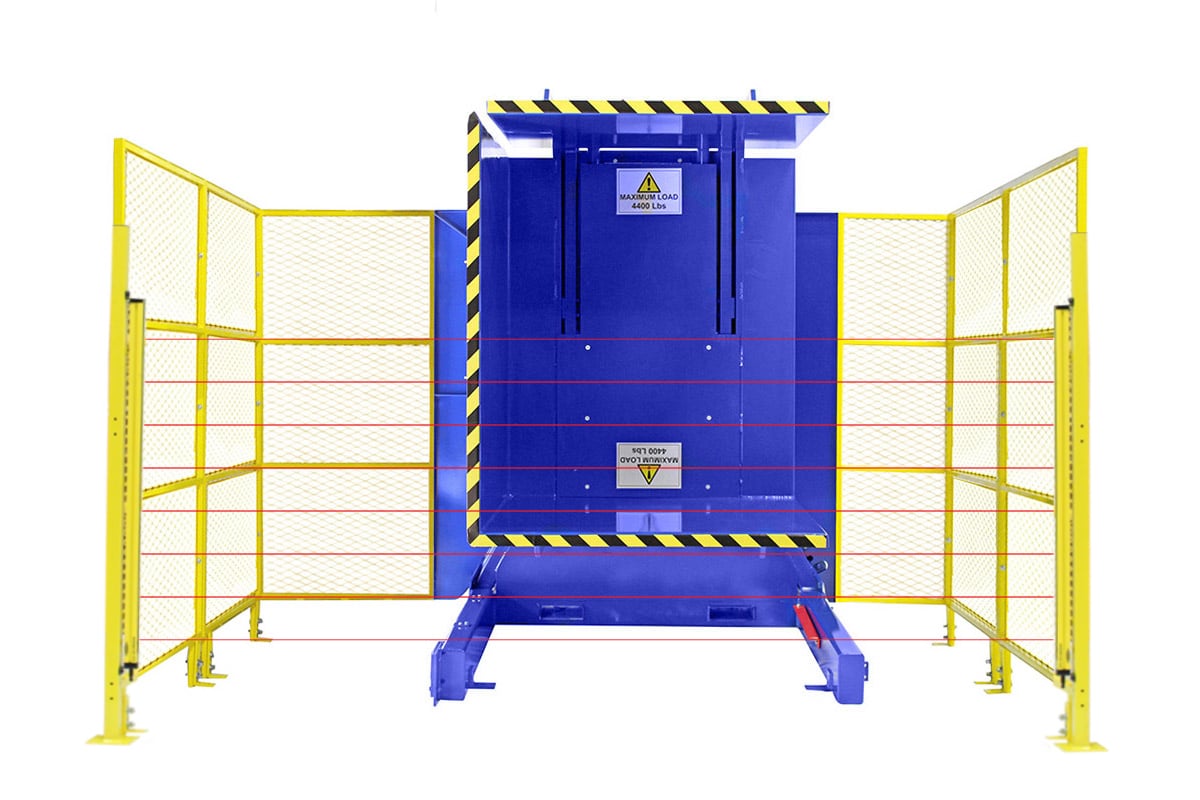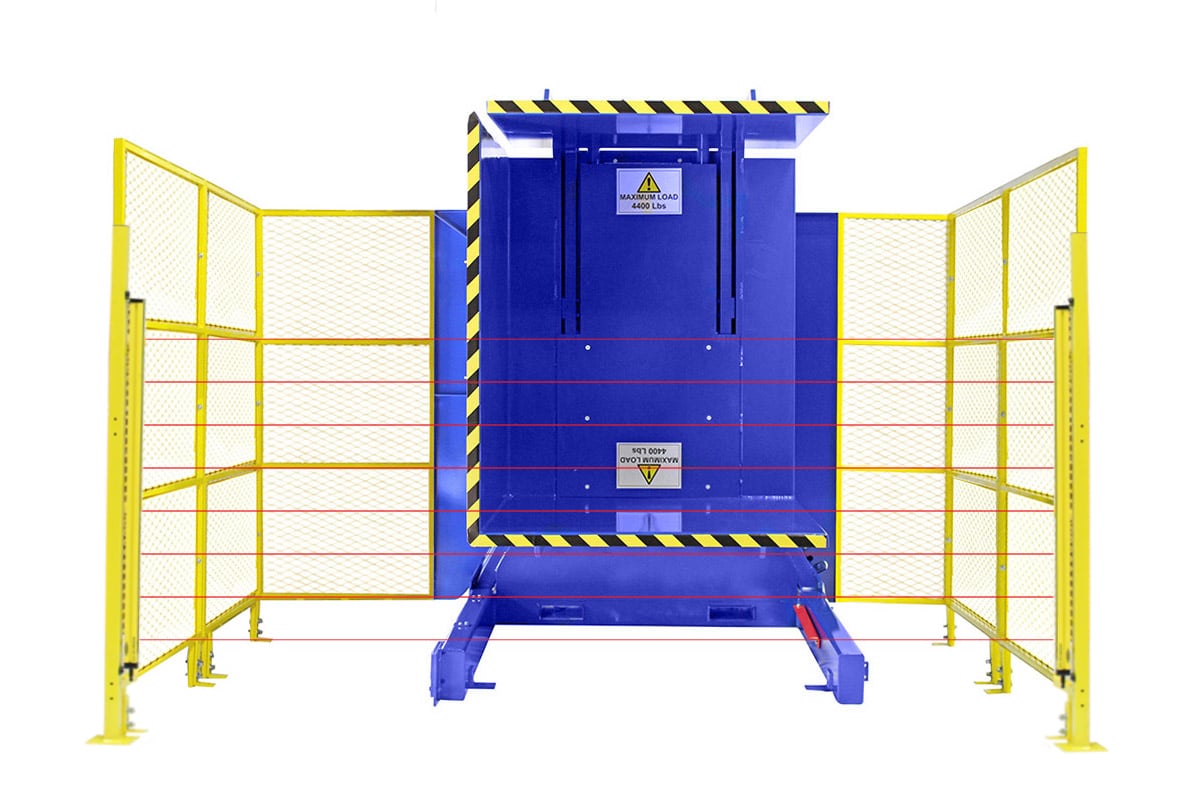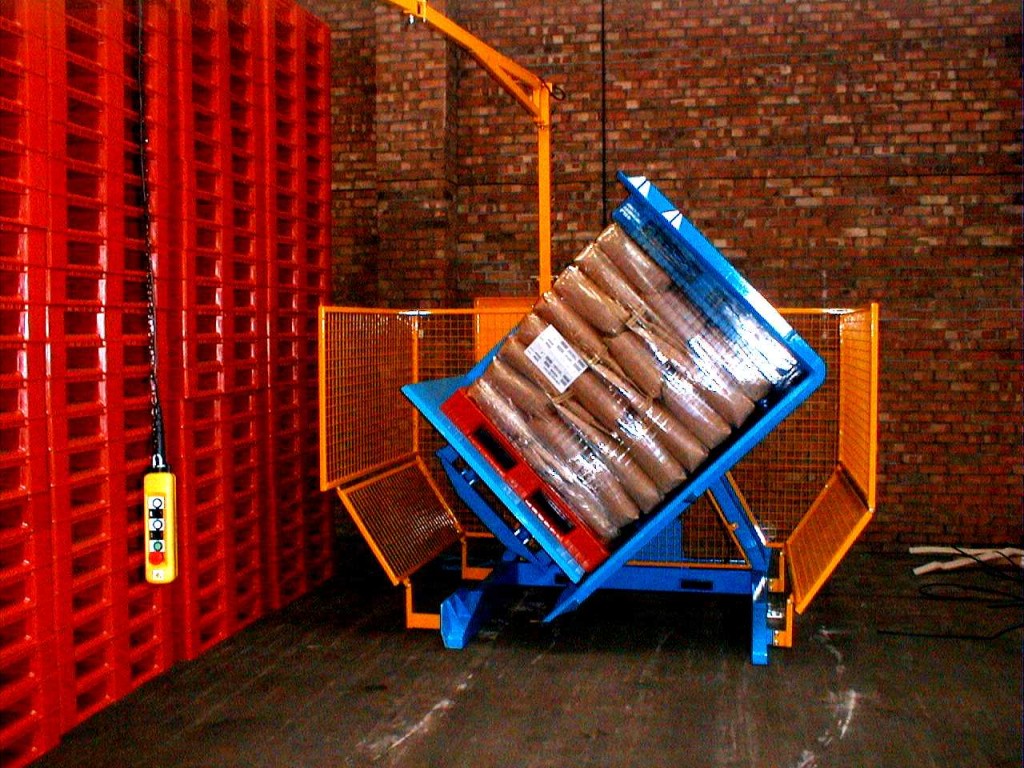Pallet Inverters 101: How to Boost Warehouse Efficiency While Prioritizing Safety
In today’s fast-paced industrial landscape, optimizing warehouse operations isn’t just about speed—it’s about balancing productivity with safety. Enter pallet inverters: unsung heroes of material handling that streamline workflows while safeguarding both workers and products. These machines, capable of rotating or flipping loaded pallets with precision, are transforming industries from automotive manufacturing to food distribution. But how do they work, and what steps can businesses take to maximize their benefits? Let’s dive in.
What Is a Pallet Inverter?
A pallet inverter is a specialized machine designed to rotate or flip palletized loads, enabling seamless transfer of goods between pallets or reorientation for storage and transport. Whether freestanding or integrated into larger systems, these devices use hydraulic clamps and programmable pressure settings to secure loads ranging from 3,300 to 4,400 pounds. With jaw openings spanning 23 to 110 inches, they accommodate diverse container types—drums, cartons, boxes—and complete rotations in as little as 17 seconds.
How It Works
- Clamping: Adjustable clamps secure the load with controlled pressure to prevent damage.
- Rotation: Hydraulic systems tilt or rotate the pallet up to 180 degrees.
-
Ergonomic Handling: Loads are positioned at optimal heights for forklifts or manual access, minimizing strain.

Key Benefits of Pallet Inverters
1. Enhanced Efficiency
Pallet inverters eliminate labor-intensive manual processes. For example, frozen food facilities report a 90% reduction in spacer removal time compared to manual handling. Automated models process loads in seconds, freeing workers for higher-value tasks.
2. Improved Safety
By automating heavy lifting and repetitive motions, these machines reduce risks of musculoskeletal injuries—a critical advantage in industries like food manufacturing, where injury rates exceed 71 incidents per 100 workers.
3. Space Optimization
Compact designs and vertical rotation capabilities allow warehouses to maximize storage density. Portable models add flexibility, enabling on-demand use across multiple locations.
4. Product Protection
Programmable clamp pressure and side-guard systems prevent crushing or shifting, ensuring delicate items (e.g., pharmaceuticals, electronics) arrive intact.
Safety Best Practices: Protecting People and Products
1. Comprehensive Training
- Operator Certification: Ensure workers understand controls, emergency shut-offs, and load limits.
- Hazard Awareness: Train staff to identify risks like uneven floors or obstructed pathways.
2. Regular Maintenance
- Daily Checks: Inspect clamps, hydraulics, and safety guards.
- Scheduled Servicing: Lubricate moving parts and replace worn components to prevent malfunctions.
3. Safety Equipment
- Emergency Stops: Install easily accessible kill switches.
- Guarding Systems: Use floor markers and barriers to define safe zones.
4. Ergonomic Design
- Position control panels within easy reach.
-
Ensure machines interface smoothly with forklifts to minimize awkward movements.

Types of Pallet Inverters
1. Stationary vs. Portable
- Stationary: Ideal for high-volume facilities, these heavy-duty units handle up to 25,000 pounds and feature customizable clamp widths.
- Portable: Wheeled models offer mobility for multi-site operations or temporary workflows.
2. Manual vs. Automated
- Semi-Automatic: Require operator input for loading/unloading but automate rotation.
- Fully Automated: Integrate with conveyor systems for hands-free processing.
3. Specialized Models
- 90-Degree Rotators: Perfect for tight spaces.
- Dual-Clamp Systems: Handle irregularly shaped loads like barrels.
Applications Across Industries
- Food & Beverage: Swap damaged pallets without disrupting perishable goods.
- Pharmaceuticals: Maintain sterile conditions during transfers.
- Retail: Speed up cross-docking for just-in-time inventory.
- Automotive: Safely reposition bulky parts like engines or tires.
Choosing the Right Pallet Inverter
1. Assess Load Requirements
- Weight Capacity: Match to your heaviest typical load.
- Pallet Dimensions: Ensure clamps adjust to your standard sizes.
2. Evaluate Space Constraints
- Measure clearance for rotation and forklift access.
- Opt for narrow models (e.g., 23-inch clamps) in cramped facilities.
3. Automation Level
- High-throughput warehouses benefit from programmable cycles.
- Smaller operations may prefer manual controls for versatility.
4. Integration
- Verify compatibility with existing forklifts and conveyors.
Maintenance and Training: Long-Term Success
1. Preventive Maintenance
- Monthly hydraulic checks.
- Annual professional inspections.
2. Operator Training Programs
- OSHA-aligned safety protocols.
- Simulations for handling jams or power failures.
Buying vs. Renting: What’s Right for You?
- Buying: Ideal for long-term needs; offers customization and ROI through durability.
- Renting: Cost-effective for seasonal demand or pilot projects; includes maintenance.
FAQs
Q: Can pallet inverters handle non-standard pallets?
A: Yes—adjustable clamps and modular designs accommodate custom sizes and irregular shapes.
Q: How do I prevent product damage during rotation?
A: Use programmable pressure settings and side supports tailored to your load type.
Q: Are pallet inverters energy-efficient?
A: Modern electric models consume less power than hydraulic alternatives, with auto-shutdown features.
Final Thoughts
Pallet inverters are more than just machinery—they’re strategic investments in efficiency and workplace safety. By selecting the right model, prioritizing training, and adhering to maintenance schedules, businesses can slash labor costs, reduce injury rates, and keep goods moving smoothly. In an era where every second and every dollar counts, mastering pallet inversion isn’t just smart; it’s essential.

![8 Critical Factors When Choosing a Wire Coil Wrapping Machine [2025 Buyer’s Guide] 8 Critical Factors When Choosing a Wire Coil Wrapping Machine [2025 Buyer’s Guide]](https://i0.wp.com/www.fhopepack.com/blog/wp-content/uploads/2023/01/Master-coil-stretch-wrapper-zt.webp?w=1024&resize=1024,1024&ssl=1)


